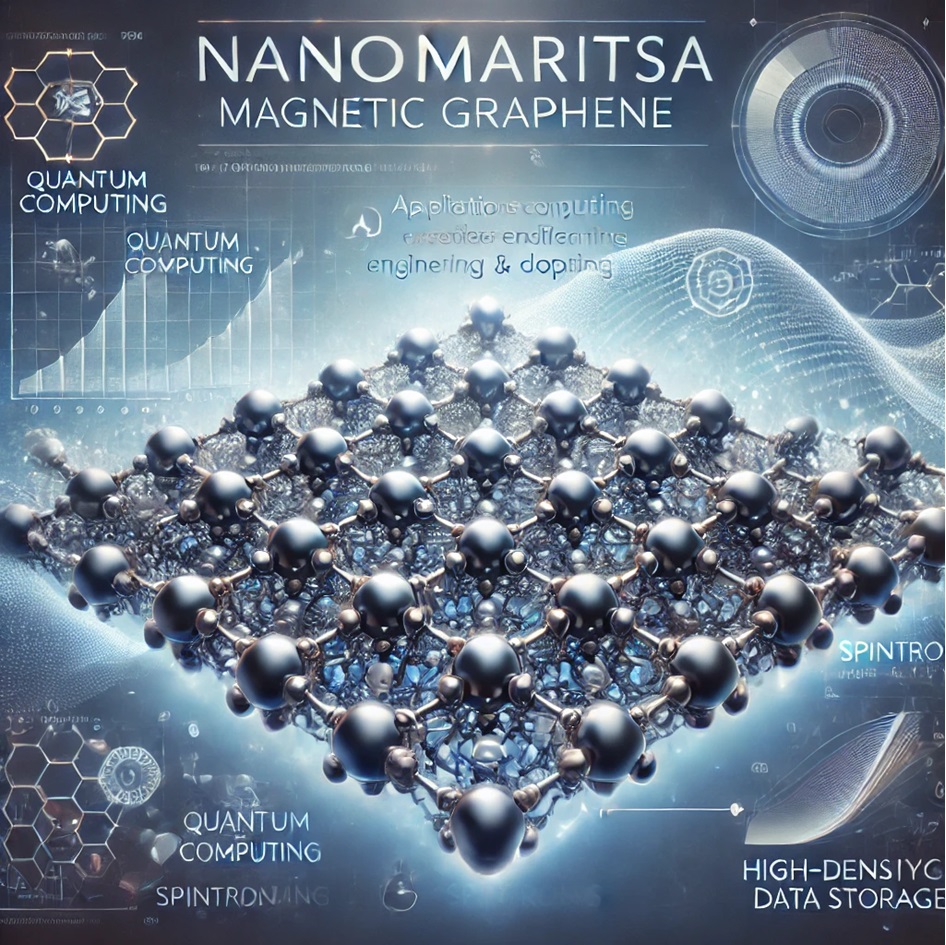Magnetic Graphene Unlocking New Frontiers in Materials Science
Magnetic Graphene Unlocking New Frontiers in Materials Science
Graphene, often referred to as the “wonder material,” has captivated scientists and engineers with its extraordinary electrical, mechanical, and thermal properties. But one question continues to intrigue the scientific community: can graphene exhibit magnetism? If so, what applications could this lead to? In this comprehensive blog, we explore the possibilities, challenges, and potential applications of magnetic graphene, supported by research and emerging technologies.
What is Magnetic Graphene?
Magnetic graphene refers to graphene that has been engineered to exhibit magnetic properties. Pure graphene, consisting of a single layer of carbon atoms arranged in a hexagonal lattice, is not magnetic due to its lack of unpaired electrons. However, by modifying its structure or introducing external elements, it is possible to induce magnetism in graphene, creating exciting opportunities in spintronics, data storage, and quantum computing.
How Can Graphene Become Magnetic?
Several methods have been explored to make graphene magnetic, including:
- Defect Engineering:
- Introducing vacancies or distortions in graphene’s lattice structure can create localized magnetic moments.
- For example, single-atom defects or Stone-Wales defects have been shown to alter electronic properties and induce magnetism.
- Doping with Magnetic Elements:
- Adding magnetic atoms, such as iron, cobalt, or nickel, into graphene’s structure can impart magnetic properties.
- Transition metals are particularly effective due to their unpaired d-electrons.
- Hydrogenation:
- Bonding hydrogen atoms to graphene’s surface (hydrogenated graphene) can break the symmetry of the lattice and generate magnetic moments.
- Functionalization with Molecules:
- Attaching magnetic molecules to graphene can result in hybrid materials with combined magnetic and conductive properties.
- Interaction with Substrates:
- Placing graphene on magnetic substrates or layers of ferromagnetic materials can induce proximity magnetism.
Applications of Magnetic Graphene
- Spintronics
- What is Spintronics? Spintronics is an advanced field of electronics that exploits the spin of electrons in addition to their charge.
- Role of Magnetic Graphene: As a material with tunable magnetic and conductive properties, magnetic graphene could enable faster, smaller, and more energy-efficient devices.
- Quantum Computing
- Magnetic graphene could serve as a platform for qubits, the basic units of quantum information.
- Its unique electronic and magnetic properties make it a strong candidate for stable and scalable quantum systems.
- High-Density Data Storage
- Magnetic graphene can enhance the capacity and efficiency of data storage devices, enabling denser magnetic storage media.
- Its atomic thinness could lead to ultra-compact designs.
- Sensors and Actuators
- Magnetic graphene’s sensitivity to magnetic fields can be utilized in highly precise sensors for medical imaging, environmental monitoring, and industrial applications.
- Biomedicine
- Functionalized magnetic graphene could target drug delivery to specific sites in the body using external magnetic fields.
- It can also be used in magnetic hyperthermia for cancer treatment.
Recent Research and Innovations
- Vacancy-Induced Magnetism:
- Studies published in Nature Materials highlight how single-atom vacancies in graphene can create localized magnetic states.
- Doped Magnetic Graphene:
- Research at leading universities has successfully incorporated cobalt and nickel atoms into graphene lattices, demonstrating tunable magnetism.
- Hydrogenated Graphene Films:
- Experiments have shown that hydrogenated graphene exhibits room-temperature ferromagnetism, a crucial step for practical applications.
- Magnetic Graphene Composites:
- Combining graphene with ferromagnetic materials has resulted in hybrid systems with enhanced magnetic and conductive properties.
Advantages of Magnetic Graphene
- Customizability: Properties can be fine-tuned through doping, functionalization, or substrate interactions.
- Integration: Magnetic graphene can be integrated into existing graphene-based technologies.
- Efficiency: Enables compact, energy-efficient devices.
- Versatility: Applicable across a wide range of industries, from electronics to medicine.
Challenges and Limitations
- Scalability: Producing magnetic graphene at large scales while maintaining uniform properties remains a challenge.
- Stability: Ensuring magnetic graphene retains its properties under different environmental conditions.
- Complexity: Integrating magnetic graphene into commercial devices requires further technological advancements.
Future Prospects
The potential of magnetic graphene is immense, with ongoing research focused on:
- Room-Temperature Magnetism: Developing magnetic graphene that operates efficiently at ambient temperatures.
- Advanced Spintronic Devices: Enabling next-generation electronics with improved performance and reduced energy consumption.
- Hybrid Quantum Systems: Combining magnetic graphene with other quantum materials for innovative computing solutions.
Conclusion
Magnetic graphene represents a bold frontier in nanotechnology, combining the unparalleled properties of graphene with the transformative potential of magnetism. As research continues to overcome challenges in scalability and stability, the applications of magnetic graphene are expected to redefine industries ranging from electronics to healthcare. With its versatility and groundbreaking capabilities, magnetic graphene is set to become a cornerstone of 21st-century innovation.


